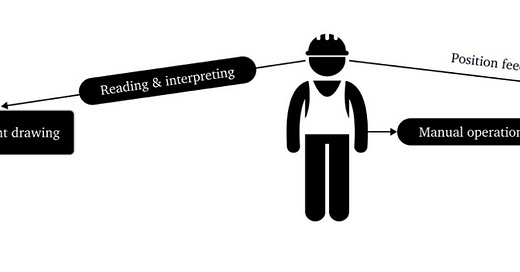The mechatronic revolution and its consequences
How the implementation of digital control revolutionised manufacturing
From the heyday of Industrial Revolution till the late 20th c., manufacturing relied on the conventional machine tools. Conventional machines were operated manually, being directed and controlled by a human operator. An operator had to read the blueprints, interpret them, and design the machining strategy based on his interpretation. After that, he would manually direct the machine, based on his personal skills, getting the feedback from it with his eyes, hands, and ears. Quality and consistency of the final product heavily depended upon the operator’s personal expertise.
Conventional machining was a semi-artisanal process. It was a personal interpretation of the drawing by the machinist that the machining process was based upon, and it was his skills, experience and physical abilities that determined how well it would be executed. Much of the knowledge on how to produce parts existed only as the tacit knowledge of machinists. This implicit, undocumented knowledge was passed from senior workers to the juniors, in the process of apprenticeship. Training a skilled operator was long, expensive and necessarily included learning from a personal example of his seniors.
The length and difficulty of training as well as the specialization of skills required for different types of operations made the supply of qualified workforce highly inelastic. Meanwhile, each machine required a skilled operator during the entire production process. This made the supply of skilled operators a major bottleneck in manufacturing, specifically in the military manufacturing. As precision machining required the highly qualified machinists with distinctive semi-artisanal expertises, components of high precision and convoluted geometry could be produced only in small quantities. Anything that needed to be mass-produced had to be simpler with looser tolerances.
Keep reading with a 7-day free trial
Subscribe to kamilkazani to keep reading this post and get 7 days of free access to the full post archives.



